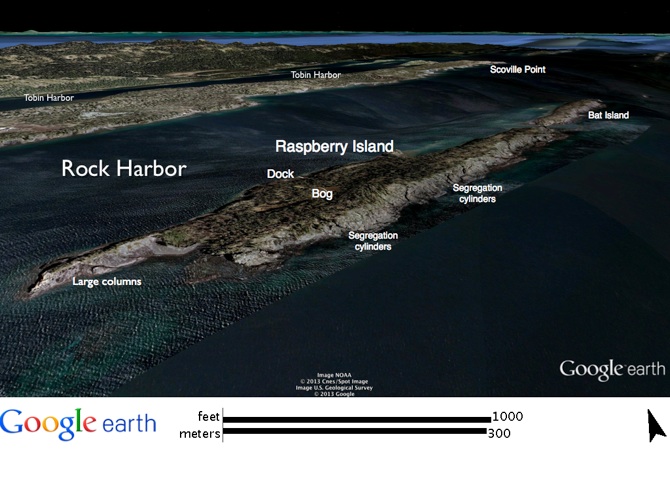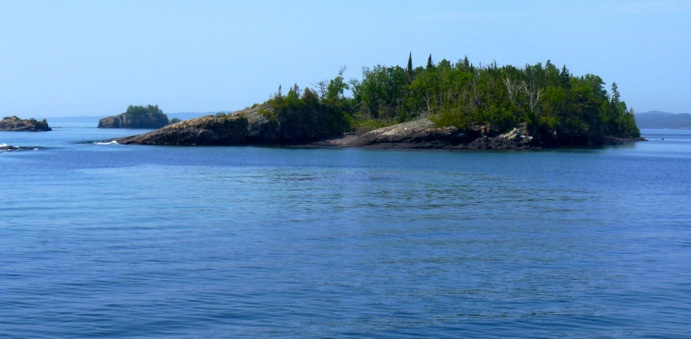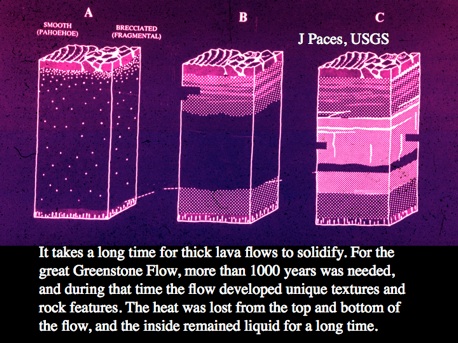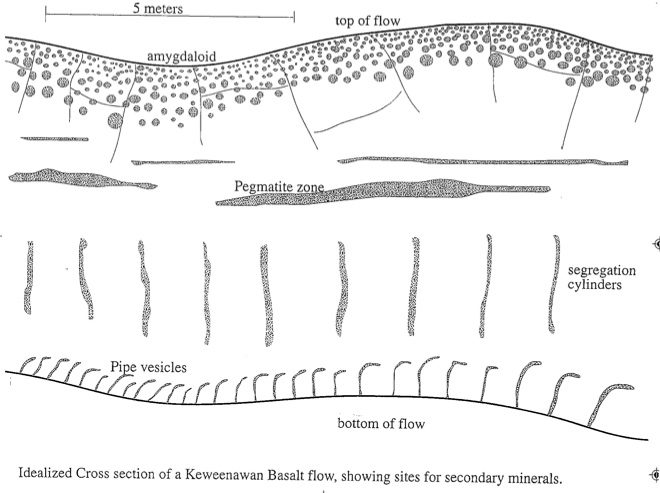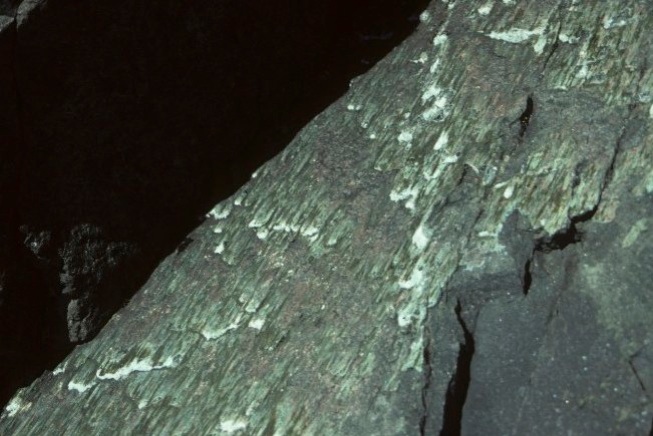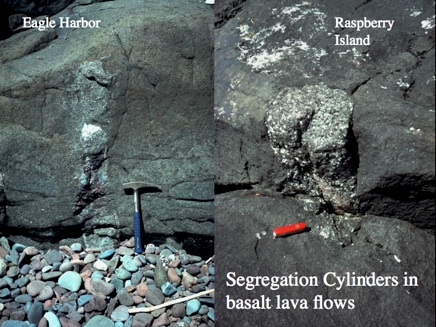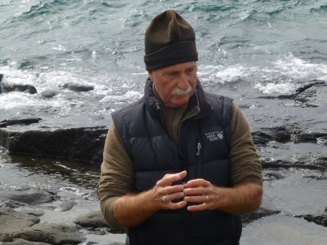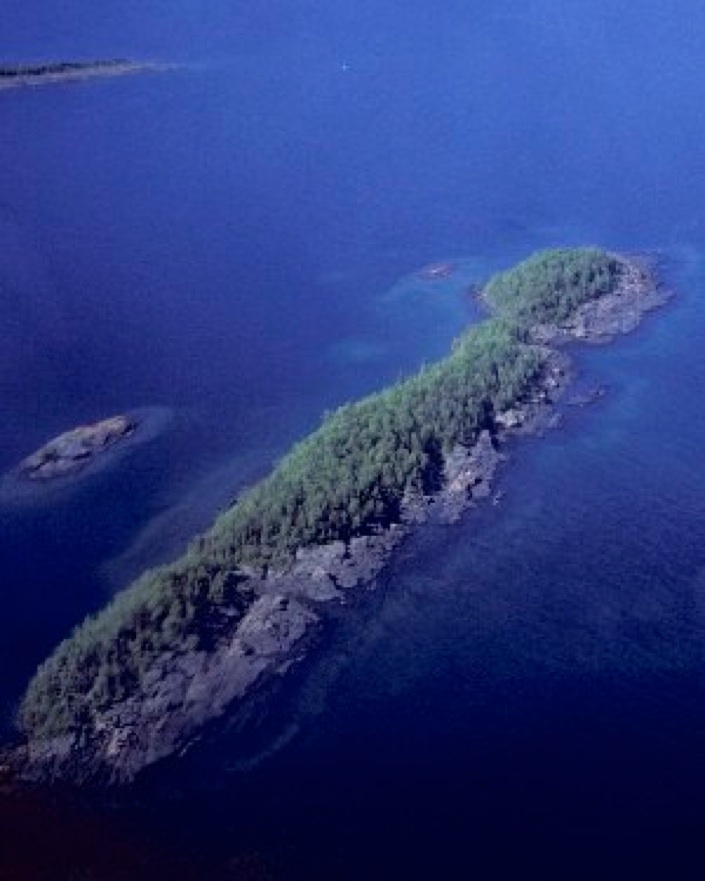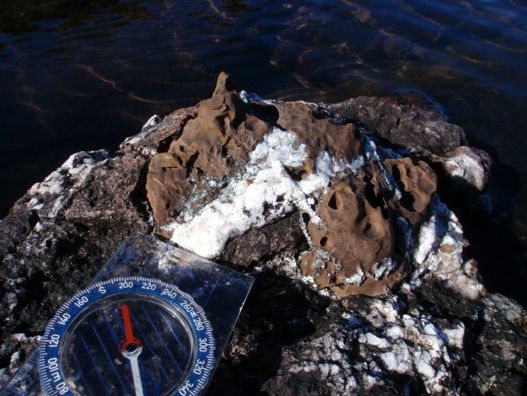Pegmatoid Zones (see also Pegmatite)
About two-thirds of the way along the shore of Raspberry Island, the exposures that occur are stratigraphically higher in the flow. Here the flow has a laminar structure that consists of fractures that are parallel to the bedding and spaced about 0.5-3 cm (0.2-1.2 in) apart. Within this part of the flow, vesicle cylinders are not seen, but small pegmatoid lenses occur. Paces (1988) describes them:
Pegmatoid horizons are similar to vesicle cylinders in that they consist of gas-rich, coarsely crystalline, granophyric material. However, they occur as discontinuous lenses and layers, typically 10 em (4 in) to several meters thick, and are usually located between the flow top and most massive portion of the flow interior. Pegmatoids are best developed in thicker flows that have cooled slowly enough to allow in situ differentiation (Cornwall 1951; Lindsley et al. 1971). This material represents the last remaining volatile-rich liquid, which is injected into fractures oriented sub-parallel to the upperflow surface. Both vesicle cylinders and pegmatoid layers contain significant void space in the form of vesicles and gas pockets and contribute to the permeability of the lava flows.
--Paces 1988
The origin of the pegmatoids is likely related to the process by which the vesicle cylinders were formed. However, for the pegmatoid origin, the rise of material in channels is limited by the thermal gradient and by the associated solidification that happens above the zone of pegmatoids, so the material is blocked and accumulates in lensoid layers (Figure 30).
It is possible that Keweenawan flows preserve the inflated nature of ponded flood basalts well because runout of inflated flows such as can occur on sloping volcanoes is prevented by the rift-filling geometry.
